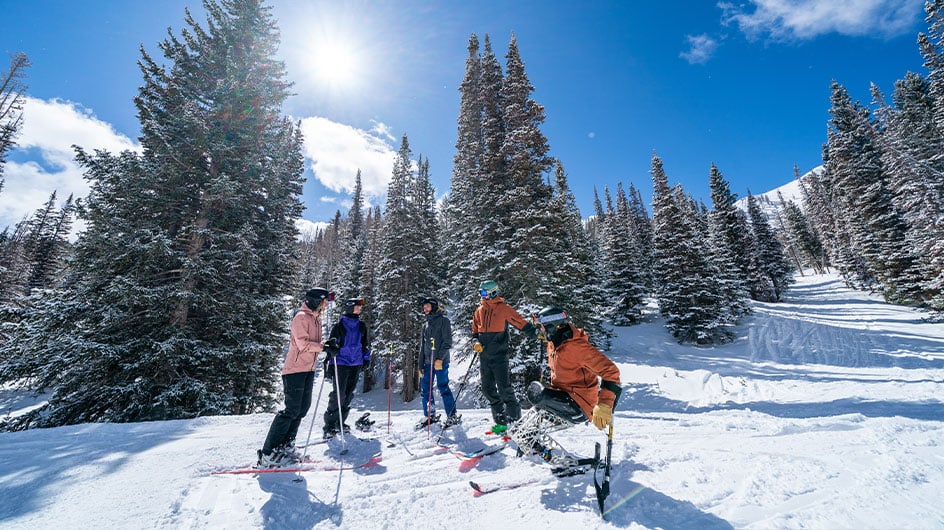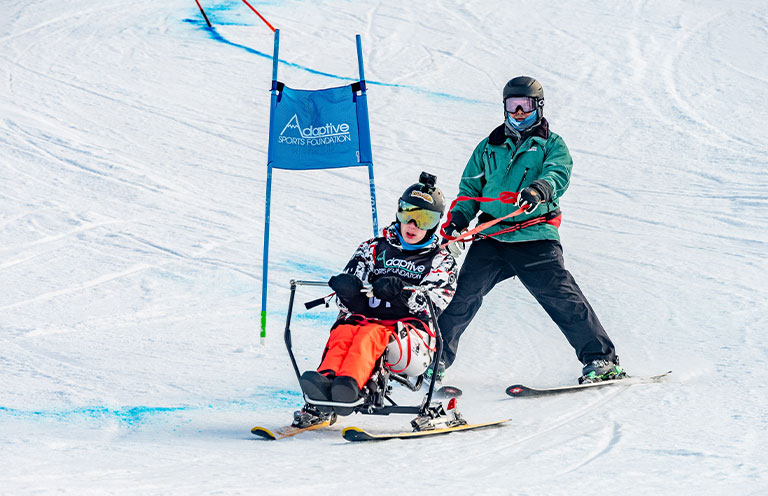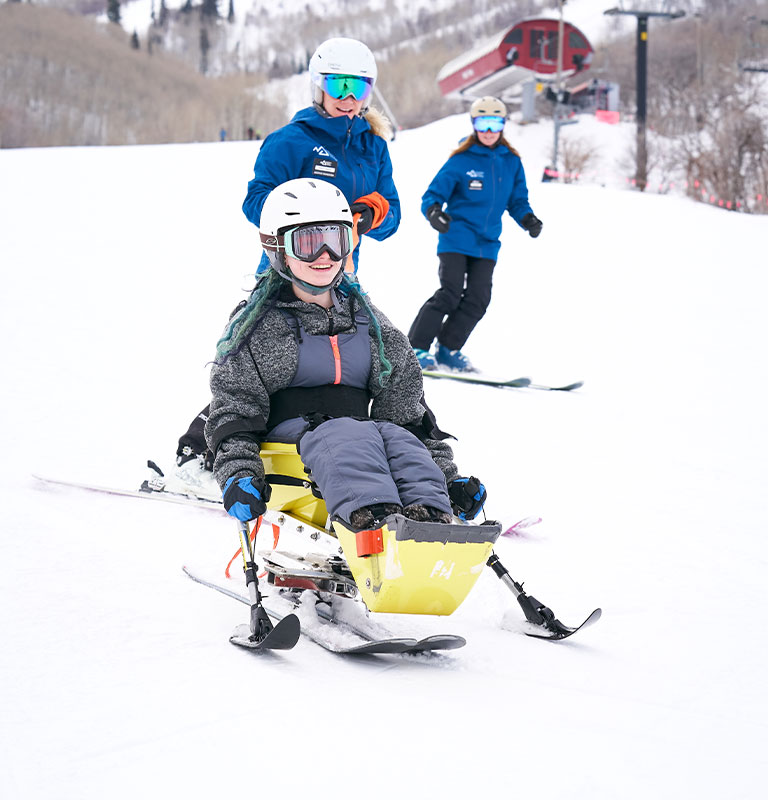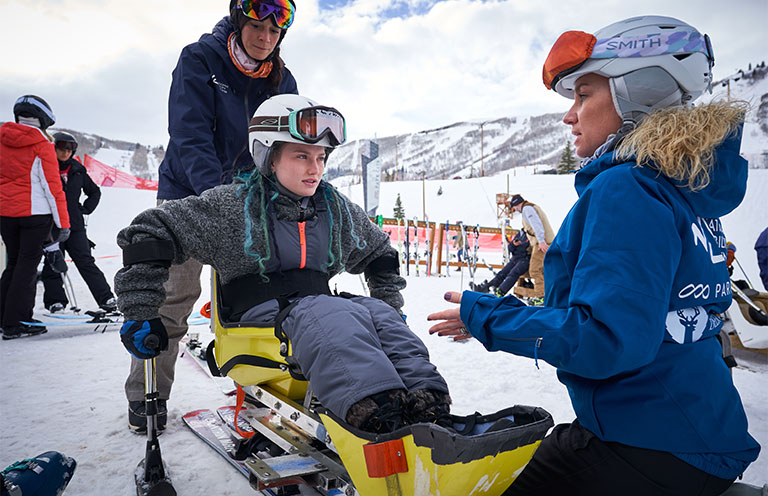6 Winter Destinations Leading the Way in Adaptive Skiing
With the right equipment and support, winter sports are within reach for people of all abilities

The ski slopes are more accessible than you may realize. Many of the country’s most iconic winter destinations are also home to organizations that offer adaptive ski and snowboard lessons for people with disabilities.
“All of these programs across the country are so important because they allow people to participate in something that they either used to love or never even tried because they didn’t think they could,” says James Mitchell, fundraising events and social media coordinator for the Adaptive Sports Foundation (ASF).

Specialized adaptive ski equipment makes it possible.
- Handheld outriggers — used for 3-track skiing or 4-track skiing, offering additional support for steering and balance to those who can stand on one or both feet
- Mono-ski — a seat mounted on one ski, steered using handheld outriggers
- Bi-ski — a stable seat mounted on two skis, controlled either independently by the rider or with help from a tethered guide
In addition to adaptive ski equipment, many adaptive skiing organizations also offer programs and instruction for skiers or riders who are blind or have low vision, who are deaf or hard of hearing, or who have cognitive disabilities.
Many ski schools list adaptive programs and lesson options on their respective websites, and instructors are available to help you determine the right fit based on your needs and goals. Most of the organizations that support adaptive winter sports programming also offer financial aid and scholarships.
Here are six destinations across the US where you can find exceptional adaptive skiing programs.
The Catskills, New York
Set in the heart of the Catskill Mountains, Windham Mountain Club is home to the Adaptive Sports Foundation’s Gwen Allard Adaptive Sports Center. Located right on the slopes, the center is powered by a dedicated staff and more than 250 trained volunteers, offering adaptive lessons in snowboarding as well as 2-, 3-, or 4-track skiing. Equipment options include the bi-ski, mono-ski, and snow-kart—a seated ski controlled via lever arms.

Park City, Utah
With access to four legendary resorts—Park City Mountain, Deer Valley, Solitude, and Brighton—the National Ability Center (NAC) gives students the chance to experience Utah’s famous powder with confidence and support. Adaptive lessons include 2-, 3-, and 4-track skiing, mono-skiing, bi-skiing, snow-sliding, ski biking, and snowboarding. The program also welcomes students who are blind or have low vision, who are deaf or hard of hearing, or who have intellectual disabilities.
Mount Bachelor, Oregon
High in Oregon’s Cascade Range near Bend, Mount Bachelor offers expansive terrain and breathtaking views—plus daily adaptive alpine skiing and snowboarding lessons through Oregon Adaptive Sports (OAS). The organization also offers programs at the Hoodoo and Mount Ashland ski areas. First-time OAS athletes can take their first three alpine lessons at no cost through the First Turns Scholarship.
Steamboat Springs, Colorado
Steamboat Adaptive Recreational Sports (STARS) serves Steamboat Springs’ alpine resorts, offering both lessons and guided skiing or riding days for those who don’t need instruction but would benefit from a trained guide to show them around the mountain and be available if assistance is needed.

Blue Ridge Mountains, Virginia
Perched in the scenic Blue Ridge Mountains, Wintergreen Resort is where Wintergreen Adaptive Sports delivers personalized snowboarding lessons and adaptive skiing—including 2-, 3-, and 4-track skiing, mono-skiing, and bi-skiing—for all ages and abilities.
Lake Tahoe, California
Framed by snow-capped peaks and shimmering alpine lakes, Lake Tahoe is a four-season playground—and a hub for adaptive snow sports. Achieve Tahoe offers private adaptive ski and snowboard lessons at multiple Lake Tahoe resorts. Among its state-of-the-art equipment is the TetraSki—a seat mounted on two skis and controlled with a joystick or sip-and-puff controls.
Students often describe using specialized equipment to coast down the mountain as the feeling of “freedom,” says Mitchell.
For more information on adaptive skiing, check out Move United’s directory of adaptive sport programs.
